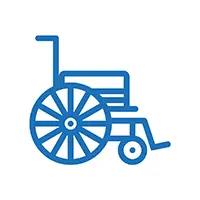Published 03 January 2019
View the Refusing to be seen as disabled video transcript.
Harper Heta refuses to be disabled.
The 10 year-old from Kaukapakapa, north of Auckland, has been a wheelchair user for nearly three years.
She became paraplegic after doing a gymnastics move that went wrong.
Despite losing the use of her legs, she doesn’t see herself as someone who is disabled.
She sees herself as normal.
“I don’t know what disabled is. Nothing in my language is disabled.
“Sometimes I feel like I’m the only one in a wheelchair in this world, but I realise that other people have tougher lives than I do.
“But when people say ‘disabled’, I just kind of think that they say nothing, because I don’t like to hear that word.”
Harper wants people to see her as normal, unique, and strong-willed.
The second-eldest of six children, to parents Lara and Hayden, Harper is determined to show the world she’s actually very able indeed.
The incident
Harper was visiting her grandparents in Kaitaia when it happened.
She was outside, showing her aunty how she could do a backbend, using the stairs to get better momentum.
Harper landed awkwardly and suddenly she couldn’t feel her legs.
“Then I remember my aunty carrying me into the car and then we rushed to hospital and they put these needles in my arms, and I was in a helicopter and my mum picked me up.”
Harper was rushed to Starship Children’s Hospital in Auckland, where she was met by her anxious parents.
“I remember getting an MRI scan and then I was in a little room and I met heaps of cool friends, and my teacher and all my friends at school spoiled me.
“There was like a whole box of presents on the side for me to do.”
Doctors diagnosed Harper with a serious spinal cord injury.
When she landed awkwardly, a blood vessel in her spine got blocked, causing it to die.
That left her paraplegic from Level 4 down – from about half way up her torso.
Adjusting to life without legs
Harper says she loved to run around lots before she had her accident, so not having the use of her legs was a big adjustment.
“I was not used to having my legs so skinny. They were really skinny.
“I couldn’t feel them at all. Whenever I [lifted them with my hands] they just flopped down.”
She says after the incident she “closed down a little bit”, and struggled to be her usual confident self.
“But after I went to the hospital I went to the Wilson centre, and then I opened up a little bit.
“I wasn’t that shy because I met some really amazing friends there, and I began to express myself a little bit more.”
Harper says she’s met some amazing people through the disability community.
“It’s been nice meeting different people and sharing my experience with others.”
Building up strength
Because Harper has no movement below her hips, she needs a very strong core in order to function well.
Even a simple task like keeping her torso upright requires a lot of core strength.
To do this, she has twice-weekly personal training sessions with Lauren from EPIC FIT gym in Albany, Auckland.
“The training I do with Lauren is based on my upper body, and it just strengthens my stomach muscles which makes me balance more.
“I’ve been getting a lot more improvement with doing Lauren with Epic Fit and I’ve got a little bit more range in my hips, I can feel my butt muscles, and I’ve got heaps of stuff back from doing all of that stuff.”
Harper says she’s making progress.
“I did a two years test about three months ago, and I have got a little bit more feeling back in my legs.”
She’s gone from having no feeling from T4, just below chest height, to now having feeling from T10, hip-level.
“That’s pretty good for me, it’s a big accomplishment,” she says.
“I think if I keep doing what I’m doing, I will eventually start to walk again.”
Being a regular kid
Although Harper’s injury was sudden and shocking to her and her family, she’s getting on with being a “normal” kid.
She likes doing things any other girl likes to do.
“At school I like to do kapa haka, handball, I like reading.
“At home I love to help out my parents and play handball, and read. I like to sing a lot, I like to play the piano.”
One of the hardest things for Harper is not being able to be as active as she wants to.
“I can’t do netball, can’t do touch ripper rugby, because I did ripper before I was in wheelchair it was really fun.”
She was sad when we shouldn’t do those sports anymore, but she didn’t let that stop her being active.
Harper started playing wheelchair basketball, dodgeball and handball.
She also participates in some athletics events at school, such as shotput and discuss.
Finding freedom in dance
Harper performs with the inclusive dance group Touch Compass.
The group includes people with a range of abilities. It’s a positive space where Harper feels like she fits in.
She and one other dancer, Jayden, are the only two in a wheelchair.
She says when she dances she experiences being herself and “just moving”.
“I feel free, I feel like myself.
“We all have a little solo bit in it. Last time I had mine with Jayden and Lucy, we did wheelies and that. It was really fun.”














